David Bean: Founder & CEO of NIRA
Episode 617
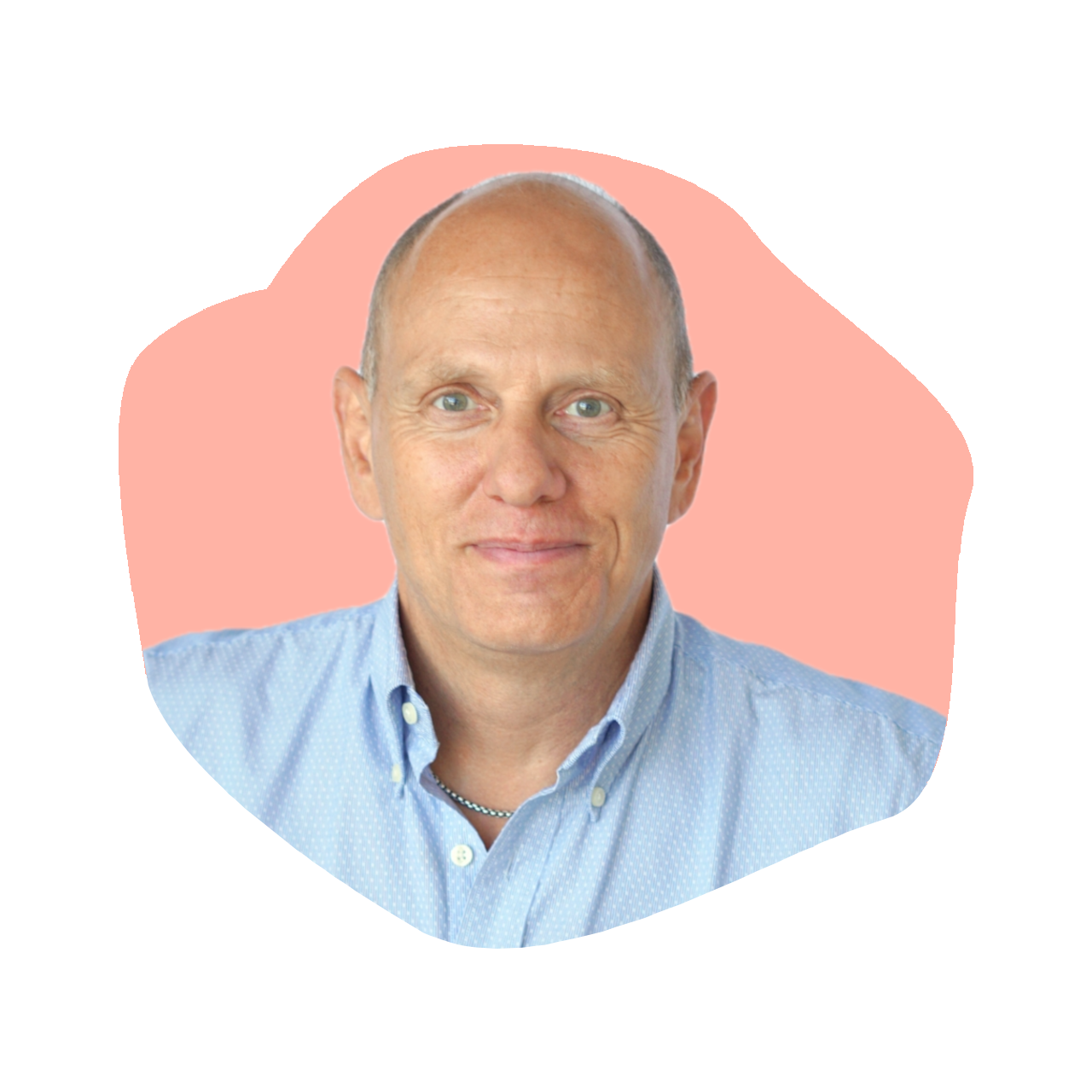
On this episode of The Kara Goldin Show, I’m joined by David Bean, Founder and CEO of NIRA, a transformative beauty tech brand bringing the power of professional-grade laser skincare right into your home. David, a laser expert with decades of experience developing semiconductor laser diodes for dermatologists and plastic surgeons, saw an opportunity to make effective laser treatments more accessible and affordable for everyone. His solution? NIRA, the world’s first painless at-home laser clinically proven to reduce wrinkles—without the harsh side effects or high costs of in-office treatments.
In our conversation, David shares the fascinating journey of creating NIRA, from initial inspiration to product launch, and the rigorous research and development that went into making his vision a reality. We also dive into the science behind NIRA's patented laser technology, the importance of clinical validation in skincare, and the challenges of disrupting a market typically dominated by in-office solutions. David offers insights on building a company with a purpose, the lessons he’s learned along the way, and how he’s redefining skincare for a new generation. If you’re passionate about innovation, skincare, or the intersection of technology and wellness, this episode is for you. Tune in now on The Kara Goldin Show!
Resources from
this episode:
Enjoying this episode of #TheKaraGoldinShow? Let Kara know by clicking on the links below and sending her a quick shout-out on social!
Follow Kara on LinkedIn – Instagram – X – Facebook – TikTok – YouTube – Threads
Have a question for Kara about one of our episodes? Reach out to Kara directly at [email protected]
To learn more about David Bean and NIRA:
https://www.linkedin.com/in/david-bean-a371202
https://www.instagram.com/nira_skin/?hl=en
https://www.niraskin.com/
Transcript
Kara Goldin 0:00
I am unwilling to give up that I will start over from scratch as many times as it takes to get where I want to be. I want to be you. Just want to make sure you will get knocked down. But just make sure you don’t get knocked out, knocked out. So your only choice should be go focus on what you can control. Control. Hi everyone, and welcome to the Kara Goldin show. Join me each week for inspiring conversations with some of the world’s greatest leaders. We’ll talk with founders, entrepreneurs, CEOs and really, some of the most interesting people of our time. Can’t wait to get started. Let’s go. Let’s go. Hi everyone, and welcome back to the Kara Goldin show. So excited to have my next guest. We have David bean, who is the founder and CEO of an incredible product that I had not heard of, although it’s been around for a bit, but it is really something else. It is called NIRA, and David is on a mission to bring professional grade laser skin care technology into people’s homes. I’m going to leave the description at that, and we’ll get David chatting a lot more about that. But this is really, really pretty cool. He’s changing the game for skin care, for sure. So without further ado, welcome David. Thank you. It’s a pleasure to be here. Super excited you’re here. So give us the 32nd elevator pitch for Nero. What makes it the game changer you set out to create?
David Bean 1:37
We basically are taking literally the same laser chip used by dermatologists, and we put it in a hand piece that you can use in the comfort of your own home, and we developed a patented process so the laser treatments avoid the pain and the erythema or redness, which is typical of professional treatments, And because you use it daily, you actually accumulate more collagen synthesis and more collagen production than you would potentially in a dermatologist, because you do it every day, and so we avoid the downsides while you get all the efficacy of professional treatments
Kara Goldin 2:18
and using it Every day. Can you give people a little glimpse? It’s not. You’re not asking for two hours. You’re asking for how much time. Well,
David Bean 2:27
that’s the beauty of lasers. Lasers are very fast, and that’s why dermatologists like them a lot, because they can get treatments done very, very quickly. And this is no different. So we’re talking two minutes a day to treat your whole face with the neuropro.
Kara Goldin 2:40
It’s really, like I said in the intro, it’s really pretty terrific. So you are, you come to us from the technology side of things. And so what were you doing before you started NIRA?
David Bean 2:53
So I was working in fiber optics, and I helped develop fiber optics in the premises market. But then long haul started taking off in the early 2000s and amplification was a big need. So I transitioned in a large company over to make the semiconductor lasers and help manage that business that amplify internet signals. And that was fantastic. And my company went from very little market share to over 50% of the semiconductor lasers to amplify our inert signals that you know, we’re still use today. And that market unfortunately crashed in 2002 2003 and I had to decide, alright, what do I want to do? And I always had an interest to bring technology into people’s horns, just like we have cell phones in our hands today, and like we see in science fiction, in Star Trek and other movies, they would use hand devices to treat skin conditions and wound healing and things like that. So I looked into what can I do with my semiconductor knowledge that’s outside of telecommunications. And I saw that doctors were using lasers, these large gas lasers and Crystal lasers, in really good applications, for skin and surgical applications. And I thought, Well, why can’t we, with semiconductors, take those large machines and make them smaller, more reliable, more efficient, as well as a lot less costly with semiconductors, just like the computer industry has seen a huge transformation with semiconductors, and so that’s why I founded my first company to make chips for professional medical systems. And then that led me to develop NIRA because no one was making a good handpiece for the home and we were selling a lot for professional systems and making them better and faster and cheaper, but no one had a good home system. So I took the same trip that’s in the professional system and built a hand piece around that. And often. It for home use. And
Kara Goldin 5:01
so how long did this take from idea to actual product? It’s
David Bean 5:08
it takes a long time, believe it or not, and hardware development. So we, we literally took eight years to develop the MIRA, okay? So we had some concepts, and I had swelled some chips into other home devices that were using fractional lasers in a home environment, and we could have gone that way. It was a bit more expensive. And basically, you have these little dots that you treat about 10% of the skin with each treatment, and then over time, it randomizes. But by treating just a smaller portion, you’re much more aggressive in the treatment, which in one sense is good because you’re getting more robust treatments, but on the other side, it was painful cause redness or erythema. So I took a couple years to develop a new process. So took the same chip, but we used it differently, and went non fractional, and we went in a way that you stimulate heat shock proteins, which triggers the collagen synthesis process, but just below the point at which you feel pain. So you’re stimulating your skin’s natural rebuilding and renewing mechanisms, but you’re not stimulating the pain or the erythema or any cellular necrosis. So literally, provide limited stress to get all the benefits, but none of the side effects.
Kara Goldin 6:25
It’s amazing. So you get the product eight years. Did that include? Did you have to get FDA approval and and other things as well? Exactly.
David Bean 6:37
Yeah. And it’s interesting, if you look at entrepreneurship, a lot of entrepreneurs have no business in being in the industry they’re in. And I’m definitely one of those. I mean, I would have never guessed in my wildest dreams that I’m heading up a skincare company or one that, you know, sells products for beauty and healthcare. But you know, sometimes it’s people from outside the industry that can take a fresh look at things and can really drive a huge innovation. So with that, I really use first principles and work backwards from the end user experience, because what I saw is that if people don’t enjoy their skincare routine, they just won’t stick with it, right? And others were working from the professional approach down to the home. And when you do it that way, you kind of push, not the best user experience, right? And so I went the opposite way, and I said, it’s got to be enjoyable. You use got to feel good. It’s got to be fast. It’s going to be but have all the efficacy of professional treatment. So in doing that, we took a solid four years to develop it. We did one preliminary clinical study, you know, hiring out clinical research firm headed up by dermatologists, some of the best in the industry, and they proved that it looked like it’ll work. Then we had to go into a full blown clinical study that was highly powered statistically and enrolled over 100 people, which is fairly large. Many only enroll 10 or 20 or 30. So we wanted to be really certain that has good results, and we also wanted a lot of good before and after pictures so people could see the differences. And that’s very expensive, and it takes a lot of time, so the clinical work alone took about three years of the eight and then, and that includes the statistical stuff and the analysis, and a lot of this has to be blinded so that it’s done well. And a lot of problems in in the industry is they’re not blinded results. It’s often self perception. There’s a placebo effect in the self confirmation bias. When you ask people, do you feel like it worked? Do you feel it improved your skin tone or texture? And that’s what a lot of lot of the data out there is, and that’s not truly scientific. So then we had to go through FDA clearance. And with FDA clearance, we couldn’t qualify by similarity directly. We needed clinical data, because we developed this new process that we’ve patented over eight countries, and now we went through the whole process. We We were approved right away, and got the FDA clearance. And then then, frankly, I felt, you know, I was the last person to sell beauty devices. So I shopped at around everyone in the industry. I met with all the big companies, both in the professional space and the consumer space. And nobody, it’s very common, wanted to buy technology, even fully with the clearances and everything. They said, No, why don’t you prove it in the marketplace first? So I had two choices, either shut down the company and just walk away, or I had to launch a beauty company as someone who had no consumer experience, no beauty experience. And so we said. Right? Let’s do it. And so we launched almost four years ago now,
Kara Goldin 10:03
and what was your first retail experience? It
David Bean 10:07
was very interesting. We have an investor who owns a chain of pharmacy stores in Europe, and she was happy to host us in a market trial. And we were smart when, when you’re an entrepreneur, you can’t burn all your cash with hoping to shoot for the road. You have to do very strategic tests, and we’re constantly testing the market. And so we did these little kiosks, and we had an iPad with before and afters and videos and and we had the product there on a tether that people could use it. And what we found is this back several years ago, you know, people need education around lasers. You don’t get up in the morning and think, Oh, I gotta laser my face today, you know. And every day you think, of course, I gotta wash my face. I got moisturized. I gotta put on some, you know, SPF, and then makeup and things like this. I mean, that’s all kind of built in. And the question is, which one, right? But in our situation, we were developing a new category. So in the CVS, like store was actually under, you know, European name. We found that when there was kiosk person there, actually demonstrating and educating people. It sold very well. And then when they weren’t there, even though we had the iPads, and we put a lot of money into this, and it was beautiful. It just it would sell because there was no name recognition, no brand recognition, people didn’t know what it was they then they weren’t going to take their time as they’re walking through by happenstance, to then go through the iPad and all the instructional materials. So what we decided is it’s better to launch direct where we can educate people through longer form YouTube ads, or not even ads, but even being hosted on, you know, podcasts like this, but also have YouTubers and influencers actually try it. And I know you’ve got a sample device and you’re trying it, and so people could speak from a first person perspective. And in fact, we kind of broke the mold. Many influencers as you know, they’ll get a free device and they’ll unbox it, and they’ll try it, and within an hour, they can do a full video and post it. We said, no, no. With ours, you can do the unboxing, and you can try it and post the initial video, but then you have to use it consistently for three months and then do an after video with before and after pictures, because we want people to see this is the number one, it’s the real deal. You get real results. Number two, they can see it from someone. They can can trust, you know, and we didn’t tell them what to say. We want it to be your words. And then they can see the before and after the results. But we’re honest to say, you really need 90 days. We call it the narrow challenge. Take the 90 day narrow challenge and, oh, by the way, we craft a guarantee around that, where we get people with their money back, they can try for a full three months if they don’t like their results, no risk, they can return the product. And with that, we’ve had very low returns. It’s been it’s been incredible.
Kara Goldin 13:11
That’s great. So when you were bringing pro level skincare into people’s homes, that’s a big deal, right? And it took a long time, big risk, and you’re finally getting getting it into people’s homes. What was kind of the biggest hurdle you talked about education, right, and getting the consumer to really understand it. But was there anything that, when you think back on those early days, what was something that you were stuck for a minute. Obviously you got unstuck and were able to, you know, move forward. But what was it that was really, really, really tough for you that that you had to kind of get over that hurdle. So
David Bean 13:54
around the education piece, it was really hard, because when you build a new category, by definition, nobody’s really in it. The categories are defined. And of course, there’s a lot of noise in the beauty space. You hear a lot of overblown claims and a lot of devices that really don’t do anything, that claim to do a lot. But the when you when you dig down deeply, they don’t have the science. So it was really hard to differentiate ourselves and show that we’re different, as well as build a new category that you can laser your yourself at home, and lasers, you know, back four years ago, that was scary. You know, they were seen as dangerous. They were seen as very aggressive. You know, if you look at the professional lasers, you know, you can come out of a treatment and be all red and need, like, a full week to recover. I don’t know if you’ve ever seen this, but it’s very common. And even before the fractional ones, there was fully believed of treatments, then you need several months to recover. Now the results are great, but just saying, laser people would. They correspond it to the redness, the downtime, the pain, and they say, No, that’s too aggressive. It’s like some people, they’ll never get plastic surgery. They’ll never go after under the knife and facelift. It’s just too, too aggressive. And then laser treatments the next step, and some say, No, that’s too aggressive. And that’s that’s one reason we did this home laser, because it’s not too aggressive. You can you literally don’t have any downtime, but you can get the same results. And because it’s stimulating your natural skin renewing process, it’s natural results. You look natural, and you just reversing your age, essentially. So the biggest hurdle was developing a strategy to get the education out there in a cost effective way, because we’ve never taken institutional funding. So we’re not venture backed. We don’t have 10s of millions of dollars. It was largely bootstrapped with, you know, my own personal time investment and a small set of angel investors that believed in us and got us to this point. So in doing that, we had to hire, we couldn’t afford experienced people, so literally, we hired marketing people right out of college with very few, very little experience, and literally, they were putting their college classes to work. And we would experiment, and I said, Look, I don’t I don’t care. And I would tell the marketing team, I don’t care what you think, and many of them were very young. Obviously, they were in their early 20s to mid 20s. And I said, I don’t care what you think, because they would think, Oh, this brand, it should look like this and that. And we basically, I said, No, we’re going backwards. We’re going to come up with ideas, but different ideas, and then test it and see what works. Because with direct advertising, you can see what the click through rate is. You can see what the return on ad spend is. You can see basically what’s working, what’s not working, what your demographics are, and things of that nature. And then you can adjust your audiences, your messaging, your visuals and the best ideally you want to align this with the actual, you know, function of the product and the actual results, you don’t oversell or undersell, you know. So it took a couple years to do that the first year, and then COVID hit. So we got a little bit of help with that, because people were more at home watching, like, YouTube videos. That’s that was helpful. So anyway, it was, it was a challenge to build a brand basically from nothing without, you know, deep pockets.
Kara Goldin 17:29
So your first product, you launched, and then how different is your company today in terms of other products or changes in your original device?
David Bean 17:40
So, yeah, the first product we still sell, we launched this about three and a half years ago. The precision. It’s got a small spot size, and it’s great for those hard to reach areas around your eyes, and that’s people’s now mourn concerns, their wrinkles around their eyes, the bags, the puffiness. But also, we’ve also got some surprises, like women would use this on their hooded eyelids, and it would raise the hooded eyelid so it doesn’t look like they’re sagging or tired or things like this. So we found it works quite well for that based on feedback from our customers, but this was not practical to treat your whole face because it’s too small a spot. So we developed the Pro which is a much larger spot, over 10 times a spot, and you can treat your whole face at two or three minutes. And this has hit the market like crazy. So over 90% of our sales now are the pro product, because people like the fact they can use not only their face. We got another surprise is they started using on their neck, their chest, that the back of their hands, anywhere where they had aging skin. And what we found is it, it also because you’re turning over skin and renewing the skin, it addresses age spots based on user feedback and wrinkles on your neck and your chest and and even your hands. And so people are just loving it. And with that, we just launched a couple weeks ago an app. So these are Bluetooth capable devices, and so we always projected that we would have an app tied to it. So now your usage data will sync with your phone if you have iOS, and you can take before and after pictures. You can compare before and after, and we’re going to add to that skin analysis tools. And then we just launched our rewards program. So if you use it as you use it, you get rewards. You get in app rewards. And then longer term, at 90 days, we actually send you, if you’re compliant and hit your goals, we send you a free Deluxe carry case for your your product. And then at 50 days, if you’re still doing well, we give you a free bathroom that’s branded nearer. And then at 250 you get on your watch. And people just love that, that not only it’s not so much, you’re getting something for free, and these are relatively modest gifts, but it’s an incentive to hit those milestones. You know, you don’t run a marathon just to get a ribbon. You run it for the satisfaction that you did it, and you feel better, and you’re healthy things like that. So this is kind of a marathon for your skin, in terms of 90 days for initial results, but if you keep going, it just gets better.
Kara Goldin 20:28
What’s the number one thing that consumers say to you? I mean, in addition to saying, Oh, wow, it’s really working, I’m sure you’ve got, you’ve got people asking for more. I mean, is there? You know, consumers are are in a good way, never satisfied, right? They want something works for them. I know, when we launched hint, especially when they found terrific flavors that they enjoyed with our product hint, they’re like, When are you coming out with new flavors. I mean, you know, it’s like, wait, you you like these flavors. You buy a lot of them. And, yeah, but what else? What else do you have? So there’s this trust that builds, I guess, so. So what’s kind of the number one thing that you start that you I guess, have heard from consumers, what
David Bean 21:20
the best compliment people can give me is it does what it says it’s going to do what what we offer is authentic, right? And we make this in the USA. It’s designed in the USA. We have customer service in the USA. We fulfill right from our factory here in New Hampshire. And when people call us up like a customer service, they don’t get a Dial by number, they don’t get a voice message. They actually get a person answers the phone within a couple rings, and they’re a skincare trained, you know, person that knows nearer and newest skincare very, very well. So they can actually answer their questions, whether it’s pre sale, post sale, and provide them excellent service. So people really love the fact that Nira just is high quality, and not only what they do, but we’re authentic, and we stand behind our product. So, and that’s that’s really important to us, that we you really, you know, we’re not just out to make money. We want happy customers, and that’s why we have the guarantees, and that’s why I put so much into the follow up,
Kara Goldin 22:26
knock off products. I’m sure we’ve had lots of people talk about this on this podcast, but I know the day that that comes, you know, on the one hand, you think, well, it’s nothing like our product, yet it looks to the consumer like that. Like your product. What do you do? I mean, besides throw in the towel, you certainly don’t do that, but, but you know what? What do you do when you see that?
David Bean 22:59
It’s that’s a tough question, right? We try to stand apart with our guarantees and authenticity, and we have some blogs out there that compare our product to others and their claims. And we’ll actually refer back to FDA data, which is public available. So on our website, you can click through to our FDA results, and you actually see the letter written from the FDA to me with the acceptance criteria and what, what it’s indicated for the clearance data and everything, the fact that we did clinical studies and more, and we just, you know, clearly state, you know, we have all this data that they Don’t things with certain comparison blogs which our customers love, because they want the education and they want the real truth. So we always point them to the source which is good. So in terms of overblown claims by the others, we don’t take direct action. You know, it’s it’s hard to do competitive advertising that’s not well received and and we do wish the best for for everybody that’s out there. We just want people to, you know, serve the customers needs, and we just focus on doing that. And when people ask, I say, well, we can stand behind everything, and we have all the data easily available. Just please do your research. And then, in terms of geNIRAl categories, it’s very common for people to talk about LEDs, and some LEDs claim that they’re lasers and they’re not. And I, you know, we can say, you know, they’re, they’re an LED. They they might say they’re a laser, but they’re an LED. Go ahead and look at the FDA, or look here, and you they can see people can quickly find that out. And with LEDs, they have some very marginal improvement in anti aging, but it’s very, very small, and it takes a long time with lengthy treatments and and some of them are aquatics. As well. So we just compare the features and benefits and say, you know, you get over 10s of minutes with LEDs, we can get you the job done in two minutes, right? And it feels great. And, you know, other technologies like radio frequency or RF, you need a sticky gel, and it takes 10s of minutes. And you also have problems where it’s not selective, where laser is very selective to triggering the dermis, whereas RF will go into subcutaneous and fat layers and muscle. And so you might have some fat loss in your face, which is the last thing you want to look young and beautiful, right? So that’s a bad side effect. Microcurrent is very temporary. And so what we’ll have these articles comparing just geNIRAl technologies, ours versus theirs. And because we’re patented, there’s been no one knock on wood that’s copied us. But we’re we’re patented in eight countries, plus we have trademarks in several countries, including folks like China, which are known to copy our technology, and so far, we’re the only ones if you want professional grade skin care without any of the side effects that’s fast and reliable and proven. We’re the only one in town at the device level.
Kara Goldin 26:16
Love it. So if you could go back to day one of of launching Nira and give yourself advice, or maybe advice that that you should take or ignore altogether. What would it be? So,
David Bean 26:32
I guess a couple of things that raise as much money as you can because, because you’re going to need it. You know, not to say that. You know, sometimes it’s good to have limited funds, because it forces you to be efficient. And we’ve carried that efficiency forward now that we’re profitable and growing very, very rapidly. But I would also say, you know, just try to hire the best people, and if they’re not working out in a very professional and respectful manner, you need to let people go fast. You know, hire slow fire. Fast is the term, obviously, in a respectful way, but if it’s just not a fit, you’re not doing anybody favors if they’re not working out to keep them on the payroll, because they’re not gonna be happy if they’re not working out and doing well, and they’re better suited somewhere else, more than likely, definitely.
Kara Goldin 27:23
Well, David bean, founder and CEO of Nira, thank you so much for coming on and sharing your journey, your experience, your brand, and everyone needs to get a NIRA go online. We’ll have all the info in the show notes, but thank you again, and thanks everybody for listening.
David Bean 27:43
Thank you,
Kara Goldin 27:44
thanks again for listening to the Kara Goldin show. If you would please give us a review and feel free to share this podcast with others who would benefit and of course, feel free to subscribe so you don’t miss a single episode of our podcast, just a reminder that I can be found on all platforms at Kara Goldin, I would love to hear from you, too. So feel free to DM me, and if you want to hear more about my journey, I hope you will have a listen or pick up a copy of my Wall Street Journal, best selling book, undaunted, where I share more about my journey, including founding and building hint, we are here every Monday, Wednesday and Friday. Thanks for listening, and goodbye for now. You.
People Also Liked
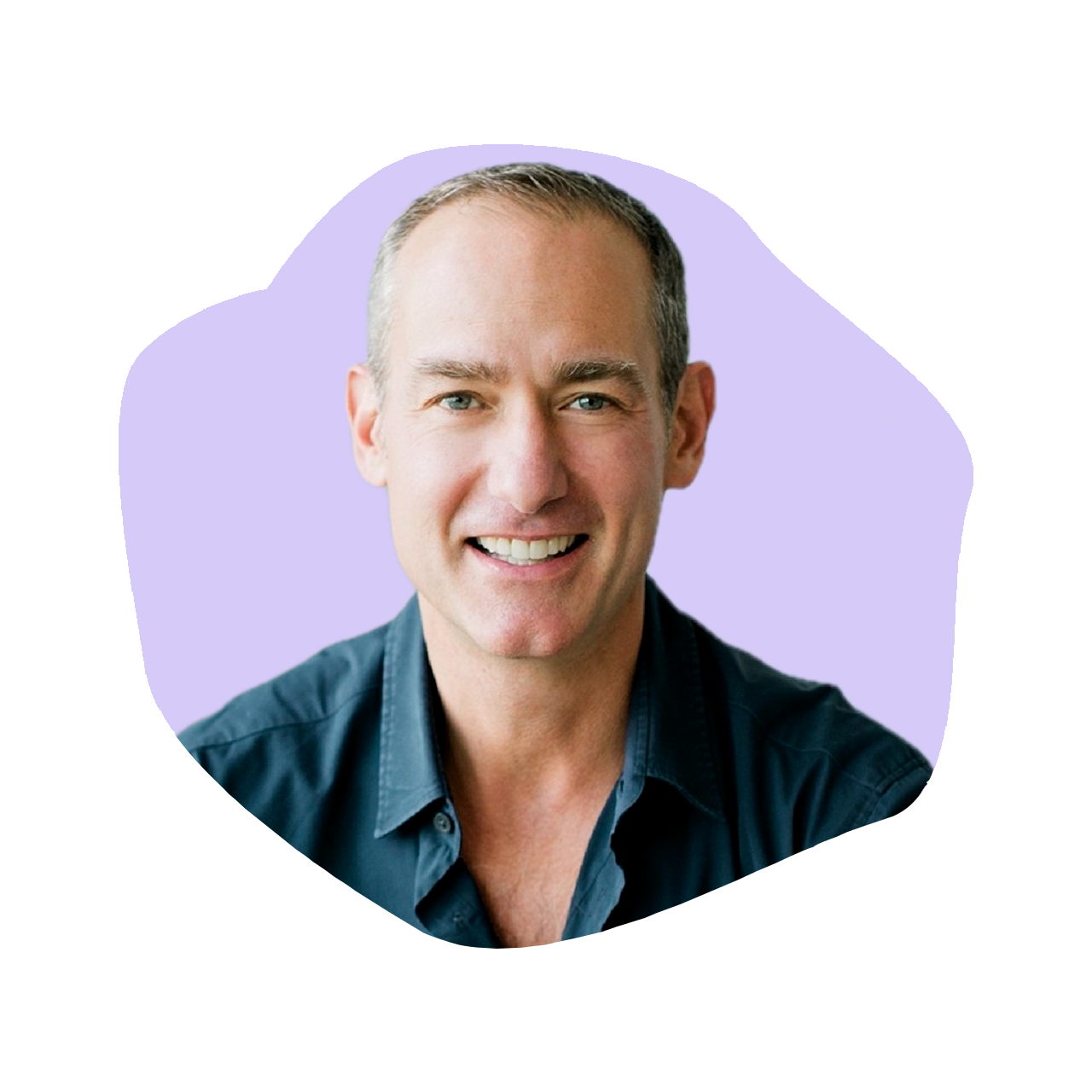
752
Mark Rampolla: Author of An Entrepreneur’s Guide to Freedom and Founder of ZICO
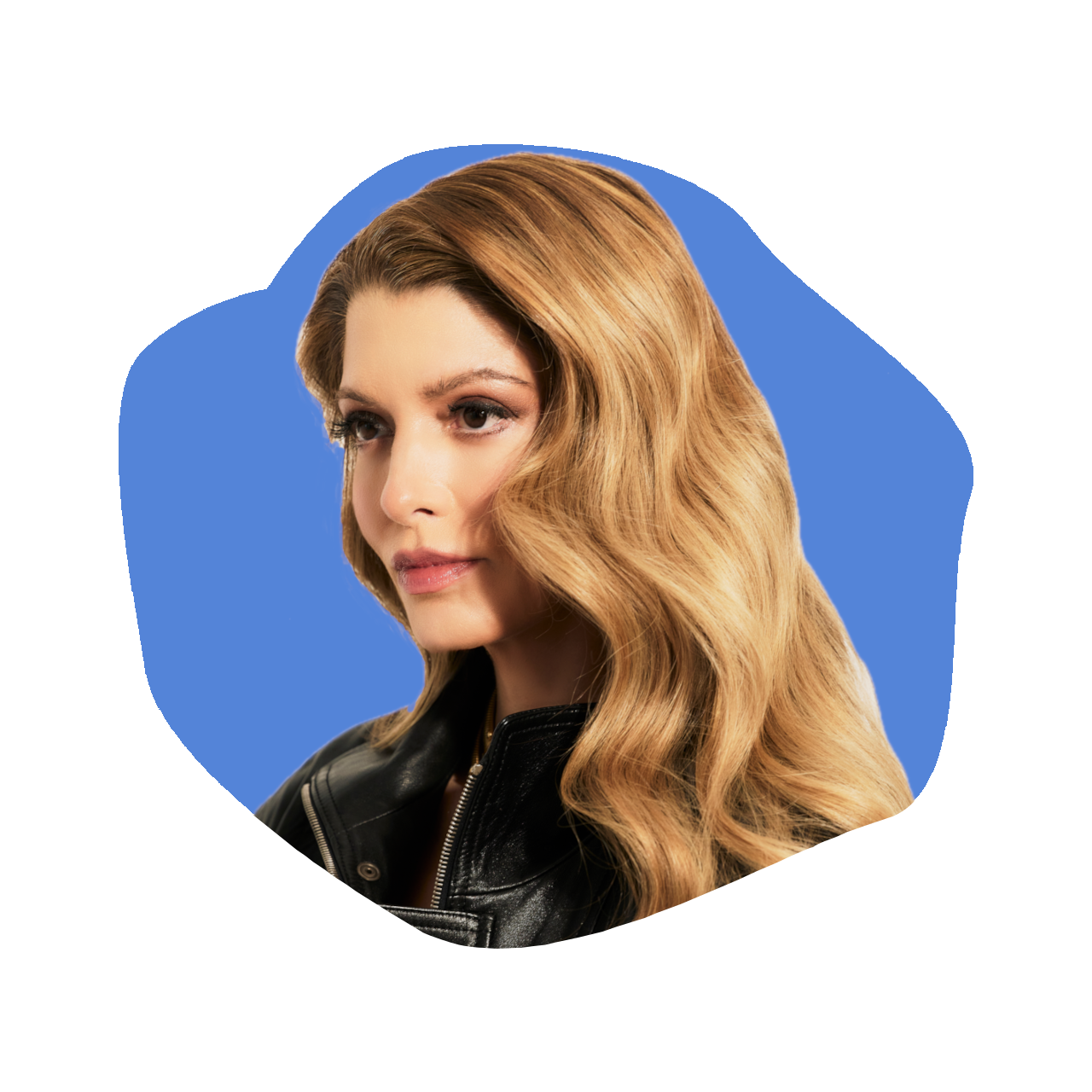
751
Deborah Pagani: Founder of Deborah Pagani Beauty
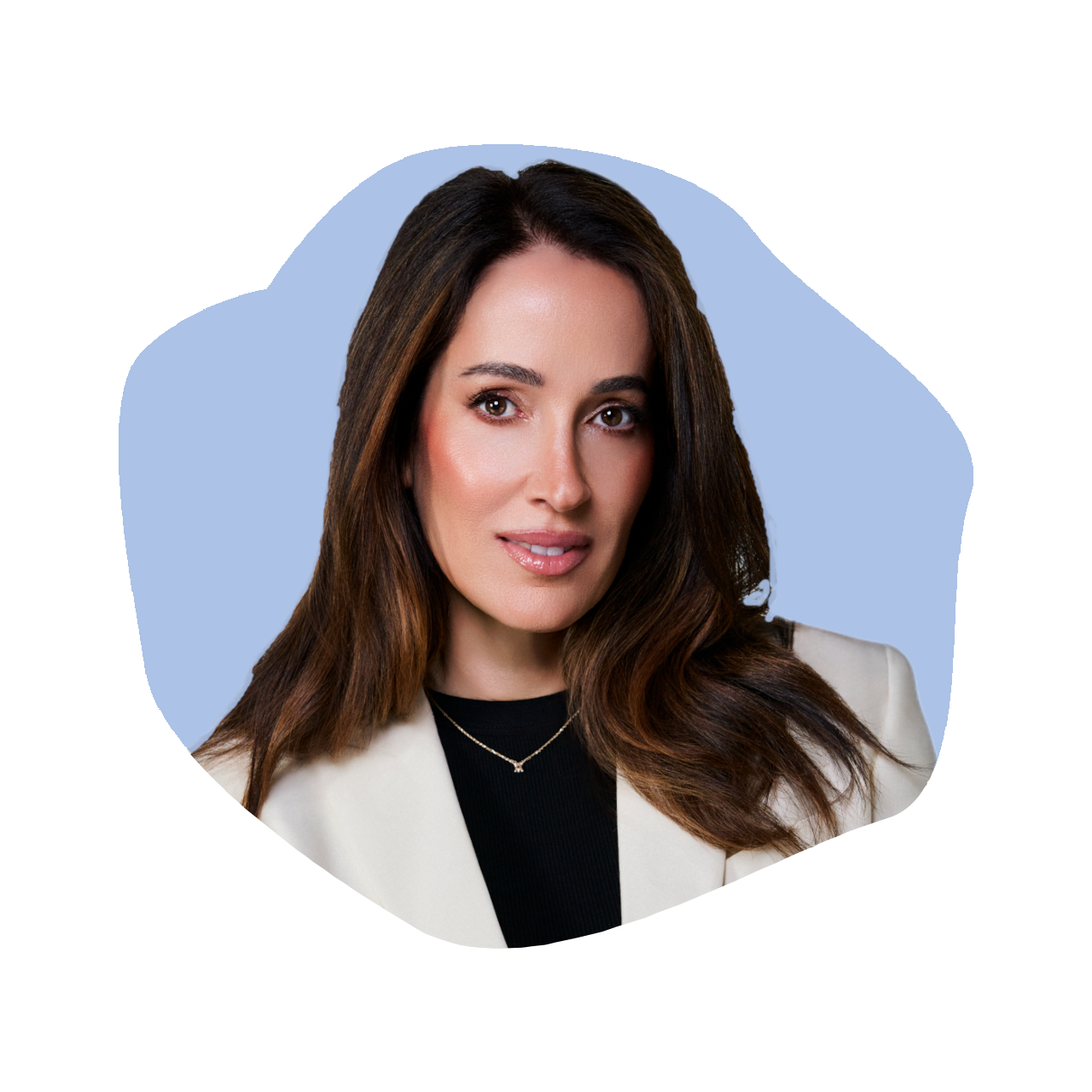
750
Angela Caglia: Founder & CEO of Angela Caglia Skincare
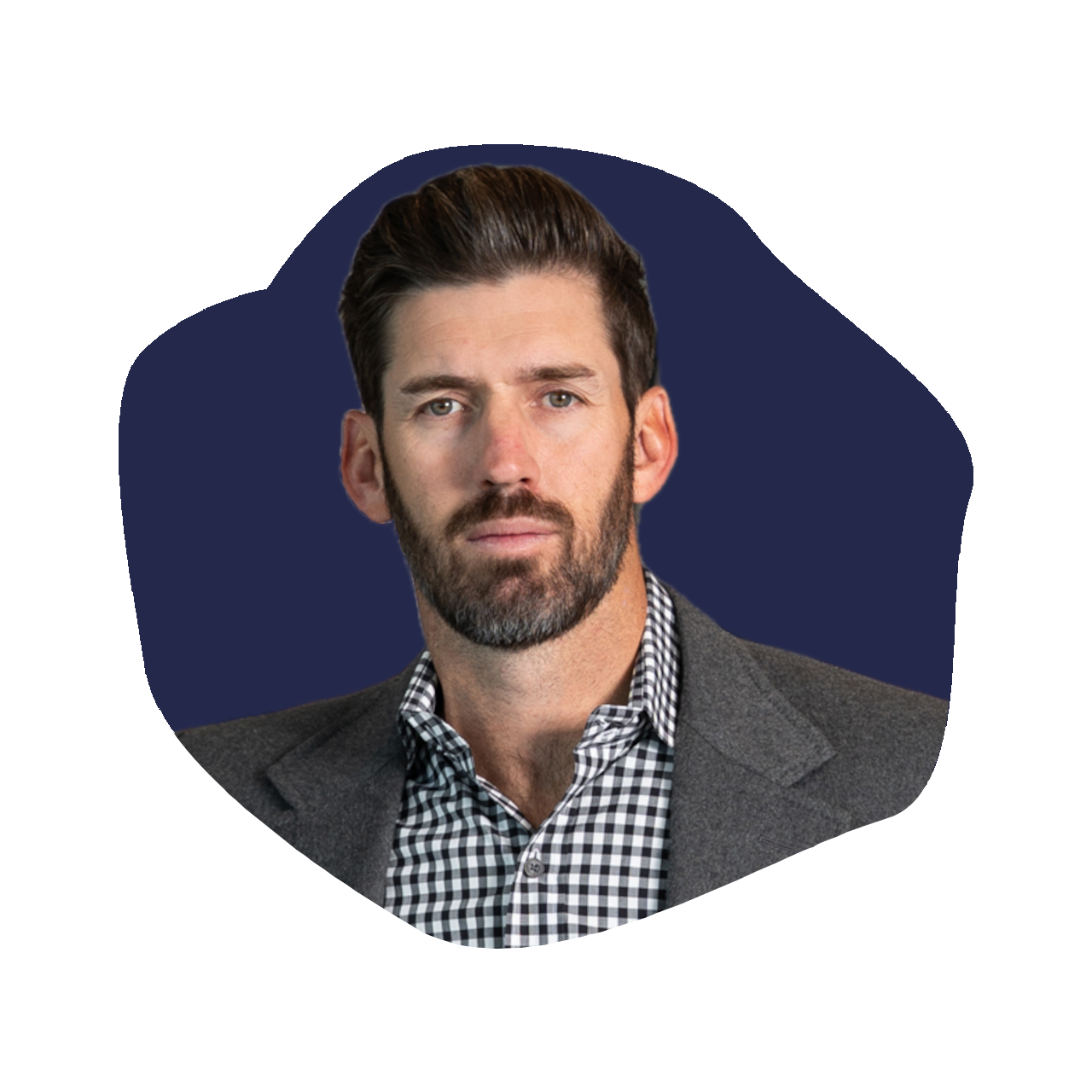
749
Doss Cunningham: Chairman & CEO of Nutrabolt

748
Cheree Ashley: Founder & CEO of Osier




